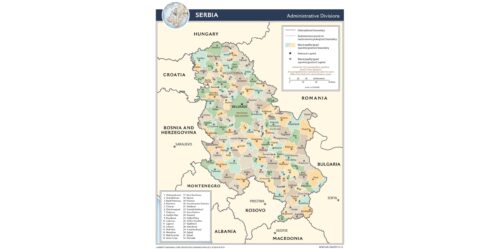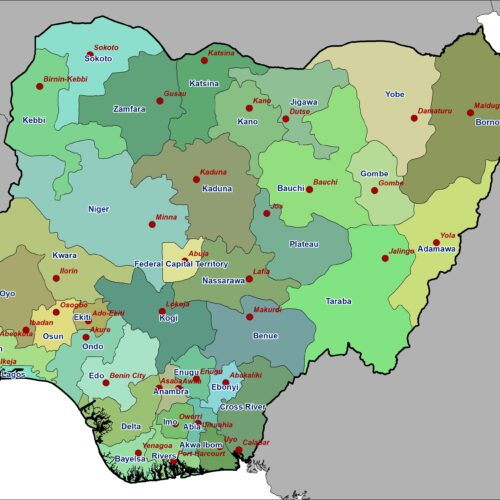
The country overview blog post series provides a brief background on each of the Reintegrate data collection countries.
Migration from Serbia, has seen a notable rise, with emigration from Serbia to several European countries steadily increasing over the last decade. About 10% of Serbia’s nearly 7 million inhabitants live in OECD countries.
In 2011, Serbian citizens primarily moved to the European Economic Area (EEA) and Switzerland for family reasons. However, between 2011 and 2019, the importance of work-related reasons grew significantly, as evidenced by a fivefold increase in the number of first residence permits issued to Serbian citizens for remunerated activities (OECD, 2022).
Within the EEA and Switzerland, Serbian migrants accounted for 23% of all first residence permits issued to Western Balkan Six (WB6) citizens between 2011 and 2019. Serbian migrants have slightly better labor market outcomes than other WB6 migrants in OECD countries.
Serbia has a holistic, multi-year migration strategy—the Economic Migration Strategy of the Republic of Serbia (2021-2027). This strategy focuses on promoting and facilitating circular and return migration, addressing the factors that push emigration, and harnessing the developmental advantages of the diaspora.
While Serbia’s migration policy framework is fairly well-established, it encounters challenges in ensuring policy coherence and the effective implementation of migration policies, particularly concerning return and reintegration.
To date, research on returnees in Serbia has primarily focused on those returning under the Readmission Agreement, with a significant portion belonging to the Roma community. However, there remains a lack of adequate research addressing the broader category of returnees.
Serbia and the European Union signed the Readmission Agreement on September 9, 2007, which was later ratified by the Serbian Assembly and took effect on January 1, 2008. On February 13, 2009, the Government of Serbia approved the Strategy for Reintegrating Returnees under the Readmission agreement. This strategy outlines the institutional framework, measures, activities, and stakeholders essential for achieving sustainable reintegration of returnees. The Council for Returnees Reintegration was instituted in October 2008 at the ministerial level to oversee the implementation of the strategy, with a dedicated Monitoring Team established within the Council for effective strategy implementation monitoring. The Commissariat for Refugees and Migration of Serbia (KIRS), as the key institution in the readmission and reintegration of returnees, is responsible for coordinating and organizing primary and urgent admission of returnees, creating conditions for the reintegration of successful returnees based on the Readmission Agreement. The Commissariat is also responsible for informing the returnees, the general public, and local and international organizations on the latest number of arrivals and activities for the returnees.
Unlike in 2014, when the registered number of readmission requests was highest—12,967 requests submitted, 8,130 approved—in 2021, 1,419 requests were submitted, 1,087 approved, and 777 citizens of the Republic of Serbia have realized their return (KIRS, 2011-2021).
Nearly half of the requests approved in 2021 were related to returning from Germany, while men comprised approximately two-thirds and women one-third of the registered returnees (KIRS, 2021). Although the numbers register a declining trend, the majority of returnees based on the Readmission Agreement are still representatives of the Roma national minority – the share of Roma among registered returnees in 2021 was 62.7% (KIRS, 2021).
Employment is crucial for supporting returnees, especially considering the worsening labor market conditions for returnee households between 2011 and 2021. Returnees often find themselves in precarious, seasonal, low-skilled jobs without formal employment contracts.

While the education level of returnees under the Readmission Agreement has slightly improved since 2019, it remains notably low compared to the general population in Serbia: one-third lack primary education, 43% completed primary school, 23% have secondary education, and only 1% have higher education (Council of Europe, 2022).
Housing support is the second most vital aspect for returnees after employment. Although improvements have been made over the past decade, returnees still encounter significant challenges that affect their quality of life. Discrimination remains a persistent issue, especially for returnees from the Roma community, who face discrimination in various settings such as communities, public places, businesses, public transport, and institutions like healthcare facilities, schools, and police stations.
Institutions at the local level are crucial in reintegrating returnees, including those under the Readmission Agreement. However, awareness and engagement vary, especially in areas with fewer returnees. A challenge is the concentration of knowledge about local policies within limited institutions or individuals, like migration councils, raising questions about broader stakeholder involvement. Additionally, the separation of civil society organizations from mainstream integration efforts hinders effective intersectoral cooperation at the local level.
The Reintegrate project in Serbia investigates the development and effectiveness of implementing return and reintegration policies and how they impact returnees, including readmitted ones, and their families in Serbia.
References:
OECD (2022). Labour Migration in the Western Balkans: Mapping Patterns, Addressing Challenges and Reaping Benefits.
Council of Europe (2022). Situation Analysis-Capacity assessment for providing support to returnees focused on Roma men and women in 14 local self-governments in Serbia.
Migration profiles of the Republic of Serbia 2010-2021, available at: https://kirs.gov.rs/lat/migracije/migracioni-profil-republike-srbije
Map source: CIA – Central Intelligence Agency (Author): Serbia (Administrative Divisions) 2015, 2018 https://www.ecoi.net/en/file/local/2035035/image.jpg (accessed on 4 April 2024)
